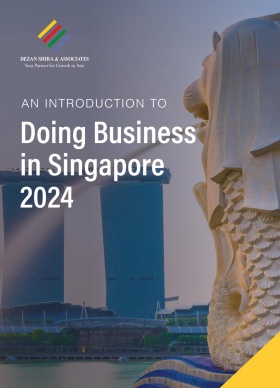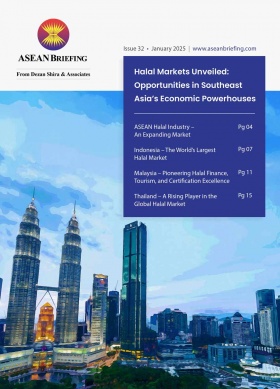Vietnam and Singapore Upgrade Ties to a Comprehensive Strategic Partnership
Vietnam and Singapore’s trade relations date back to the 19th century, initially driven by their colonial powers, France and Britain. Following Vietnam’s unification in 1975, diplomatic ties were officially established, and both nations aimed to strengthen their economic and political relationship. After Vietnam joined ASEAN in 1995, the two countries further enhanced their bilateral cooperation.
In 2013, a Strategic Partnership. was signed, focusing on economic cooperation, defense, education, science and technology, and regional collaboration. In 2025, the partnership was elevated to a Comprehensive Strategic Partnership (CSP), addressing modern challenges like technological innovation, environmental concerns, and political instability in the region.
What is a Comprehensive Strategic Partnership?
A Comprehensive Strategic Partnership (CSP) is a high-level formal agreement that fosters broad collaboration across key sectors between two or more parties. CSPs address common challenges and extend previous agreements to include new fields, creating more robust bilateral relations.
The CSP between Vietnam and Singapore focuses on renewable energy, AI technology, undersea cable development, and other critical infrastructure projects. CSPs are significant because they align national goals and policies to tackle global challenges more effectively.
For instance, a similar CSP between Vietnam and the US, signed in 2023, has increased trade cooperation in semiconductor manufacturing. The Vietnam-US partnership has been economically beneficial, evidenced by growing exports from Vietnam and substantial investment in manufacturing from companies like Apple, which has invested US$15.8 billion since 2019 in its Vietnam manufacturing base.
Key areas of cooperation under the CSP
Economic and trade relations
Trade between Vietnam and Singapore has steadily grown. In 2023, Singapore exported US$16.4 billion in goods to Vietnam, including integrated circuit boards and refined petroleum, while Vietnam exported US$4.88 billion to Singapore, primarily in broadcasting equipment. In 2024, trade increased by 9.49 percent, reaching a total of US$23.5 billion.
Vietnam is also emerging as a “China Plus One” manufacturing base, and Singapore, as Vietnam’s largest foreign investor, has contributed nearly 30 percent of Vietnam’s foreign direct investment (FDI) in recent years.
Technology and innovation
The CSP strengthens collaboration in the digital economy and smart city initiatives. Singaporean companies, like Shopee, dominate e-commerce in Vietnam, reflecting the growing interest in Vietnam’s digital ecosystem (statista). Singapore’s involvement in Vietnam’s urbanization is significant, with plans to integrate Ho Chi Minh City, Hanoi, and Da Nang into a regional network of smart cities, focusing on digital infrastructure and e-payments (VIR).
Sustainability and green economy
Sustainability is a key focus of the CSP, particularly as ASEAN nations face rapid urbanization and climate change threats. The expansion of the Vietnam-Singapore Industrial Parks (VSIP) will include green energy investments. The VSIP, a joint initiative since the 1990s, will now focus on sustainability, including rooftop solar installations and water treatment projects. Additionally, both countries are committed to offshore wind power cooperation, supporting the transition to renewable energy sources and promoting cross-border electricity trade.
Singapore is positioning itself as a leader in carbon services in Asia, facilitating carbon trading and sustainability investments. The carbon credit trading agreement between the two countries, signed in 2022, allows Singaporean companies to purchase carbon credits from Vietnam, furthering both nations’ green finance and net-zero ambitions.
Defence and security cooperation
Vietnam and Singapore are deepening military ties, particularly in maritime security. Joint naval exercises focus on improving coordination in areas like search and rescue, anti-piracy efforts, and maritime law enforcement in the South China Sea. These collaborations aim to promote regional stability and address mutual concerns, such as environmental risks and human trafficking (wilsoncenter).
People-to-people and educational exchanges
The CSP includes initiatives to promote talent development and educational exchanges in fields like semiconductor technology and medical research. The two countries are expanding their Technical and Vocational Education and Training (TVET) efforts and launching the Singapore-Vietnam Innovation Talent Exchange Programme. Both nations also seek to enhance cooperation in cultural, artistic, and sporting fields while boosting tourism.
Strategic implications for ASEAN and beyond
The Vietnam-Singapore CSP significantly enhances ASEAN’s economic and political integration by fostering deeper cooperation. It boosts supply chain resilience through the expansion of VSIPs and supports ASEAN’s long-term economic goals of sustainability and innovation. The CSP also facilitates the free movement of skilled professionals within the region by allowing mutual recognition of qualifications and helping integrate labor markets.
The CSP is likely to provoke different reactions from other regional powers. China, with its strong economic ties to both countries, may view the partnership pragmatically. However, China could be concerned if the cooperation expands into sensitive areas like cybersecurity, digital infrastructure, or maritime security, especially in the South China Sea. For example, the undersea fiber-optic cable project could challenge China’s regional dominance in telecommunications.
The United States is expected to view the CSP positively, as it strengthens ASEAN unity and aligns with U.S. strategic interests in the Indo-Pacific. The partnership supports U.S. priorities such as trade diversification, supply chain security, and advancements in the digital economy.
Future outlook and challenges
The Vietnam-Singapore CSP is expected to grow, with both nations achieving milestones in economic, technological, and political cooperation. However, challenges remain. Regulatory issues could delay or add costs to key projects, such as the undersea cable, due to territorial disputes in the South China Sea. Economic hurdles, such as global recessions or disruptions in supply chains, could slow progress in sectors like green energy. Additionally, the shift from an export-based manufacturing economy to a more technology-driven one in Vietnam may face challenges, including the need for greater domestic innovation.
About Us
ASEAN Briefing is one of five regional publications under the Asia Briefing brand. It is supported by Dezan Shira & Associates, a pan-Asia, multi-disciplinary professional services firm that assists foreign investors throughout Asia, including through offices in Jakarta, Indonesia; Singapore; Hanoi, Ho Chi Minh City, and Da Nang in Vietnam; besides our practices in China, Hong Kong SAR, India, Italy, Germany, and USA. We also have partner firms in Malaysia, Bangladesh, the Philippines, Thailand, and Australia.
Please contact us at asean@dezshira.com or visit our website at www.dezshira.com and for a complimentary subscription to ASEAN Briefing’s content products, please click here.








